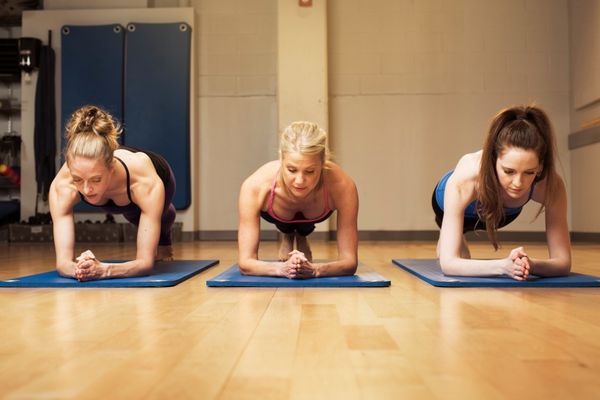If you have taken my class in the past then you have heard me say many times, “I am looking for the quality of your movement, not how big your range of movement is...”
I am referencing the basic principles of Pilates - master perfect form before adding in speed and/or coordination for the challenge. Everybody has specific body mechanics unique to them, so we must learn to embrace what our personal range looks like, and more importantly, what it should feel like in your body. By mastering the subtle sensation and engagement of the deepest layers of your trunk you will build a solid base to improve your range of motion and get stronger quickly.
Along with getting your 20 DS classes in, I want to challenge you to focus on how to engage your pelvic floor and transverse abdominals before adding advanced options in.
1) How to engage your pelvic floor before you begin any movement.
The pelvic floor is a layer of muscles that lies between the sitz bones and the pubic bone, like a hammock holding in your internal organs. Contracting these muscles is called a kegel. A kegel feels like you are stopping the flow of urine and lifting the area between the pubic bone and the sitz bones. It is a subtle yet powerful move that can change the way you exercise. It adds an important layer of support for the core, plus it helps assist the engagement of the transverse abdominals.
Test Exercise - Sit on the floor with your knees crossed and spine lengthened. Inhale, and on the exhale feel the breath lift the area between the pubic bone and sitz bones while slightly tighten across your hip bones. Hold for 30 seconds. The sensation/contraction should be approximately 25 -30%. Once you have mastered this exercise, try to feel this light lift beneath your trunk before all movement.
2) How to engage your diaphragm correctly for proper breathing.
Correct breathing techniques can make or break your form. Many people breath high up in their chest rather than low in the belly. Which neglects the top half of the diaphragm. We can see the diaphragm properly moving by pulling the bottom ribs down and together during an exhale. This powerful way of breathing helps activate the transverse abdominal wall - the major support system of our trunk.
Test Exercise - Start in the exact sitting position as the kegal exercise. Wrap your arms across your torso and hold your ribcage. Inhale laterally (sideways) through the ribs and belly. On the exhale, lift your pelvic floor and breath all of your air out of the ribcage by feeling your ribs narrow towards the spine. Correct breathing has a lift from the base of your trunk while the rib cage pulls down and in to press all the air out - creating a canister of support for your midsection. (See video below)
Now you may be saying, there is so much to think about just with breath. How do I coordinate it with my exercise? And that leads me to my third challenge...
3) Take breaks and slow your movement down.
Modifying in a group class is not a bad thing. Sometimes you can get more out of simplicity than trying to do every challenge the instructor gives you. This may mean that Graceful is a good place to start to master this supportive breathing technique. I promise you will notice a difference with how strong you feel.
If you are not able to attend Dancers Shape classes then implement these techniques in your daily walk, at the gym, or during an at home fitness video. It is applicable to all movement. If the techniques feel impossible to master, then schedule a private with one of our DS Pilates Specialists, or find a reputable Pilates trainer. This treat to yourself never disappoints!

